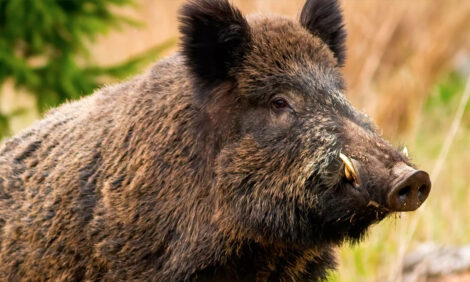



NADIS Veterinary Report and Forecast – April 2008
UK - This is a monthly report from the National Animal Disease Information Service (NADIS), looking at the data collected from their UK farm inspections.Sows
With first quarter visits to pig units coming to an end, a number of reporters have highlighted the drop in fertility experienced in sows served in the early autumn of 2007 with the impact on farrowings around this time of year. Most reports indicate that production data suggests that this has now passed and production is recovering. It will be interesting to see if this dip in production has a measurable impact on availability of pigs for slaughter in the early summer, which is likely to coincide with the reduction in slaughter pigs as the first wave of ‘industry deserters’ finally clear their herds. Suggestions that some European producers were euthanasing baby pigs in late 2007 (because of the costs of feeding) will also add to the expected shortfall. The much-needed rise in prices might be expected if this shortage is realised. A number of reports in March continue to highlight producers leaving the industry, making it very difficult to know the national herd size.
With winter weather evident over the last month or so, it is no surprise that sow condition was in focus and may have longer-term implications for sow productivity. Additionally, problems were encountered with delayed onset of oestrus after weaning, possibly associated with energy deficits. Inevitably, outdoor units have been particularly vulnerable to these weather related issues. Perversely, in one instance, fly bite lesions were diagnosed on 2 boars – not something that would be expected in a cold winter.
Infectious disease is never far away from pig breeding units and 2 conditions featured prominently in the monthly reports.
- Parvovirus – manifest as low litter size and high mummification rates associated with inadequate vaccination.
- PRRS. In one case a primary outbreak in a naïve herd was reported with very high piglet mortality. Elsewhere, errors and neglect of vaccination regimes was blamed for re-emergence of disease on enzootically affected herds.
Piglets
Scour was prominent within suckling piglets in the reports in March, with non-specific and unidentified scours linked to hygiene problems. In at least one case failure to wash rooms due to pressure of farrowing was to blame.
Specific infections included rotavirus and clostridia scour – the latter despite vaccination. It was not clear whether there were problems with vaccination techniques or whether the organism involved was type A – not covered by the licensed vaccine in use.
Piglet quality at birth was highlighted as an issue, particularly where sow condition was variable.
Weaning age of piglets in batch systems was also of concern; there is a danger if service patterns are not tight that the batch system becomes “batch weaning” rather than a “batch farrowing” system, rather undermining the benefits of batching. If a wide farrowing window occurs it is inevitable that weaning age will be variable with the temptation to wean some pigs below the legal minimum ages.
Weaners
With the industry eagerly awaiting the commencement of the BPEX funded PCV2 vaccination research project, PMWS and disease related to PCV2 was very much in focus in March, with many reports linking a range of diseases with underlying PCV2 infection. This includes Glässers, Pneumonia, fading and in one case Meningitis. It is now evident that the classic PMWS picture affecting pigs of 6-8 weeks has, for many producers, given way to a less specific syndrome inherently affected by the herds’ background health status, often affecting older pigs. This is likely to simply reflect the natural evolution of a major infection once it becomes enzootic (endemic) in the population.
Ear biting and ear tip necrosis was highlighted in some reports as a major problem (80% prevalence). There is a belief in some European countries that this condition is PCV2 associated, although it is not clear whether the effect is direct or just a reflection of other systemic disease affecting blood flow to the ear tips.
Whilst NADIS reports frequently highlight difficulties with “batch farrowing” systems it is encouraging to see that, when operated correctly, such systems have been associated with a dramatic fall in post weaning variability
Looseness in weaners continues to feature in reports, often non-specific. With feed prices still rising there is a continual temptation for cost cutting on diets that risk false economy.
Growers
Respiratory disease continues to feature as the most prominent condition in growing pigs with mixed infection common. Primary PRRS outbreaks triggered one serious disease situation but PCV2 associated respiratory complex (PRDC) continues to be a major issue. It is to be hoped that Circovirus vaccination uptake will increase (subject to availability) and that these complex and damaging disease pictures will decline.
Swine dysentery remains a significant disease in some areas although the pattern of these infections has changed in the last 10 years and even in the current economic climate it may be sustainable to live with it – something that would have been unthinkable in the 1990’s.
Other specific reports of problems in growers included:
- Infectious arthritis of unknown origin leading to pyaemic spread and abcessation of lungs.
- High incidence of ruptures/hernias suspected to be genetically linked.
- Foot damage in pigs on new slats where toes become trapped in the void areas.








